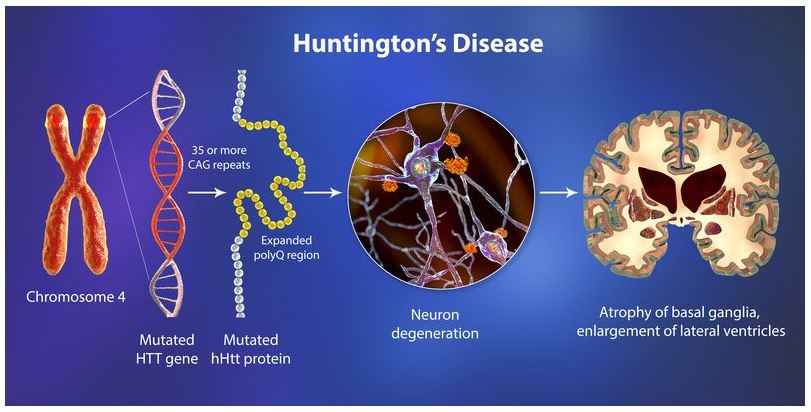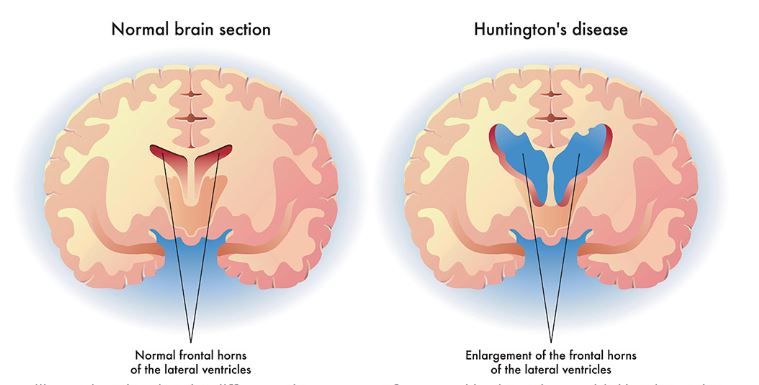Micro RNA Technique Fighting Huntington Disease: When you hear “Huntington’s disease,” what comes to mind? For many families, it’s fear, frustration, and a desperate search for answers. This blog brings you the latest on a groundbreaking therapy — microRNA treatment delivered through the AMT-130 trial — and why it could finally change the story for this brutal brain condition. I’ve pulled insights from trusted outlets like Washington Post, BBC, and The Economist, plus clinical trial updates. This isn’t medical advice — just a deep dive into what’s happening, why it matters, and what questions you should be asking.

What Exactly Is Huntington Disease?
Huntington’s disease (HD) is a genetic brain disorder. It happens when a mutation in the HTT gene creates faulty instructions that lead to toxic proteins. These proteins slowly kill brain cells. But what does that look like in real life?
- Movements become jerky or stiff.
- Memory fades.
- Mood swings can turn daily life upside down.
The hardest part? If one parent carries the mutation, there’s a 50% chance of passing it on to their child. So naturally, people search: Is there a cure for Huntington’s disease? Can symptoms be reversed? Let’s explore why answers have been so limited.
Why Current Treatments Fall Short
Right now, treatments for HD only manage symptoms. Doctors may prescribe medicines for mood, movement, or sleep — but none of these stop the disease from progressing.That’s why searches like “Huntington’s cure news” or “latest Huntington’s treatment 2025” keep trending. Families want more than symptom relief. They want hope.And that’s where microRNA steps in.
What Is MicroRNA Therapy?
Here’s the simple version:
- MicroRNA works like a genetic switch.
- It silences the faulty instructions that produce the toxic huntingtin protein.
- Fewer bad proteins = slower brain damage.
The therapy in focus is AMT-130, developed by uniQure. Doctors deliver the microRNA directly into the brain through surgery — targeting the source, not just the symptoms.Sounds sci-fi, right? But it’s very real, and the results are getting attention worldwide.

What Do the Clinical Trials Show So Far?
In 2025, the latest AMT-130 trial results made headlines.
Here’s why:
- Patients showed a 75% slower progression in brain decline compared to expected rates.
- Some symptoms stabilized instead of worsening.
- Researchers finally have evidence of a disease-modifying treatment — not just symptom relief.
But people naturally ask:
- Is this a cure or just a slowdown?
- How long do results last?
- What risks come with brain surgery?
The answers are cautious. It’s not a cure yet. It’s early-stage. But it’s the first time science has shifted the course of HD in humans.
Challenges Still on the Table
Let’s be real: breakthroughs come with big questions.
- Safety → Brain surgery isn’t risk-free.
- Access → Who gets into trials? Only a limited group of patients.
- Cost → Gene therapy is expensive — could families ever afford it?
- Long-term results → Will benefits last, or fade with time?
These are the things researchers, patients, and families are debating right now.
Could This Work for Other Brain Diseases?
Here’s a fascinating thought: If microRNA therapy works for Huntington’s, could it also help with Parkinson’s, ALS, or Alzheimer’s? Scientists think so. The same principle — silencing toxic proteins — could apply to other neurodegenerative diseases. That’s why this trial isn’t just about Huntington’s. It could be the start of a new era in brain medicine.
Final Thoughts
For decades, Huntington’s families have been told: “There’s no cure, only symptom management.” Now, for the first time, there’s a reason to believe the story could change. Is it a cure? Not yet. Is it hope? Absolutely. The leap from mutation to medicine has begun. And with every trial update, the future looks a little brighter.
Frequently Asked Questions (FAQs)
1. What is Huntington’s disease and how does it affect the brain?
Huntington’s disease is a genetic disorder caused by a faulty HTT gene. It produces toxic proteins that damage brain cells, leading to problems with movement, memory, and mood. Over time, the disease gets worse and can shorten life expectancy.
2. Can microRNA therapy cure Huntington’s disease?
Right now, microRNA therapy (like AMT-130) doesn’t cure Huntington’s. Instead, it slows the progression by silencing the mutant gene that causes damage. Researchers are hopeful, but it’s still in trial stages.
3. What are the risks of AMT-130 gene therapy?
The therapy requires brain surgery, so risks include infection, complications, or side effects from the procedure. That’s why it’s only being tested under strict clinical trials.
4. How much could gene therapy cost in the future?
No official price is set yet. But similar gene therapies can cost hundreds of thousands of dollars. The big question is whether insurance or health systems will cover it once approved.
5. Could this breakthrough help Alzheimer’s or Parkinson’s too?
Yes, potentially. The same microRNA technique could be adapted to silence harmful proteins in other brain diseases. It’s early days, but researchers are already exploring this possibility.
As the BBC notes, this is the first therapy to truly target the root cause of Huntington’s.
For more details on ongoing studies, visit the Huntington’s Disease Society of America official site.

Trump’s $100K H-1B visa Fee Spurs Tech Giants’ Urgent Travel Alert at Amazon
A sudden and sweeping policy change by the Trump administration has sent ripples of concern through the global technology sector. The introduction of a new $100,000 H-1B visa fee on application, announced in September 2025, drastically raises the cost of hiring skilled foreign workers in the United States overnight.
